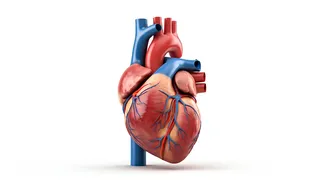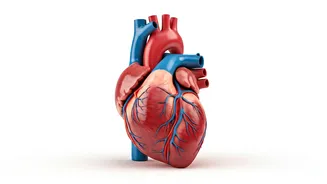Stairway to Health
The first test, known as the stair test, involves a common, everyday action: climbing a flight of stairs. However, the focus isn't just on the climb itself
but rather on how your breathing recovers afterward. The key is to pay close attention to how quickly your breathing returns to normal after you reach the top of the stairs. If it takes longer than 30 seconds for your breathing to stabilize and for you to feel steady again, this could indicate that your lungs aren't functioning optimally. Healthy lungs are designed to swiftly adjust to increased activity, efficiently delivering oxygen and removing carbon dioxide. If your lungs are slower to recover, it could signal a decline in lung capacity. This could hint at underlying issues like asthma, chronic bronchitis, or even early signs of other lung conditions. This test is a simple yet effective way to gauge your lung's efficiency and responsiveness to physical exertion. Regular monitoring can offer valuable insights into your respiratory health over time, helping to detect any potential concerns that may need further investigation.
The Blow Test
The second test, called the blow test, focuses on your ability to control your airflow. This skill is a significant indicator of your lung and airway health. To perform this test, take a deep breath and then slowly and steadily exhale through pursed lips, like you're gently blowing out a candle without causing the flame to flicker. The aim is to maintain a consistent airflow for 8 to 10 seconds. If you find it challenging to sustain a steady breath for this duration, it might suggest that your airway control is weak. Weakness in this area can be an early sign of obstructive lung conditions, such as chronic obstructive pulmonary disease (COPD) or asthma, in which the airways constrict, making breathing more difficult. This test provides a direct measure of your ability to manage your breath, reflecting the health of your airways. A strong and steady exhale indicates healthy airflow, whereas difficulty maintaining the steady breath suggests a need for further assessment. Therefore, the blow test serves as a valuable indicator that may alert you to potential respiratory issues.
Breath-Holding Challenge
The third test involves measuring how long you can comfortably hold your breath after taking a normal inhale. Healthy lungs generally enable a person to hold their breath for about 25 to 30 seconds without experiencing discomfort. To conduct this test, inhale naturally, and then hold your breath, timing how long you can do so without struggling to breathe. If you find you can only hold your breath for less than 15 seconds, this may indicate reduced lung capacity or potential respiratory problems. The ability to hold your breath is closely linked to your lung volume and how efficiently your lungs utilize oxygen. Shorter breath-holding times might indicate that your lungs aren't delivering adequate oxygen or that your respiratory muscles could be weaker. This test provides a quick assessment of your lung's efficiency in taking in and utilizing oxygen, offering valuable clues about your respiratory health. Regularly monitoring your breath-holding time can help you track any changes and may warrant a visit to a healthcare professional if you notice a significant decline.
Beyond the Tests
These at-home tests serve as a starting point for assessing your lung health, but they aren't a substitute for professional medical advice. If any of the tests raise concerns or you have pre-existing respiratory issues, it's essential to consult a doctor for a thorough evaluation. In addition to these tests, there are lifestyle changes you can implement to maintain and improve your lung health. Quitting smoking or avoiding exposure to secondhand smoke is crucial. Regular exercise, especially aerobic activities that enhance lung capacity, can greatly benefit your respiratory system. Furthermore, practicing breathing exercises, such as pranayama or bhastrika, can boost lung function. Ensuring good indoor air quality by using air purifiers and reducing pollutants also contributes to healthier lungs. The proactive steps can significantly enhance your respiratory well-being, complementing the insights provided by these simple at-home assessments. Prioritizing your lung health is a critical aspect of overall well-being, and incorporating these tests and lifestyle changes can set you on the path to healthier lungs.















